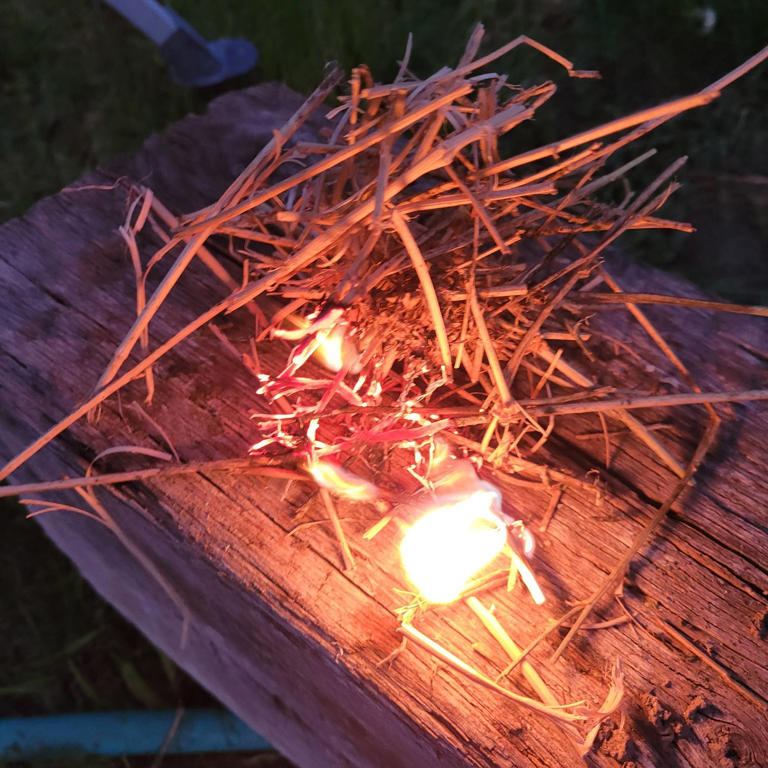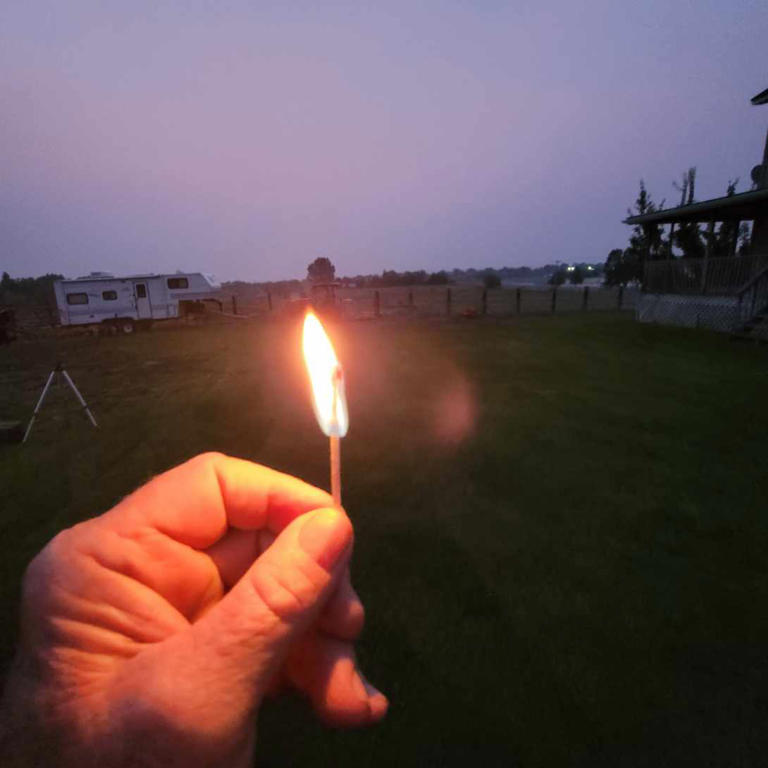By: Randy Tucker
Photos by author
The ability to control fire was one of the first separations of man from the other animals. Fire was once an essential part of life, and it still can be when you’re alone in the wilderness.
Starting a fire was once a matter of life and death. It remains a valuable life-saving skill if you’re ever lost or stranded in a remote area far from civilization.
Until a generation ago, you didn’t have to worry about cell phone reception, it was just you, your skills, wits, and the challenge of the elements.
The last thing you want as a seasoned woodsman is to have a pile of burnt matches lying on the ground, and no fire. It is much better to be prepared to start a fire with a single spark.
The idea of a one-match fire is a popular metaphor in literature, not just in wilderness survival, or hunting and fishing lore, but in the concept that once something is prepared correctly, the process will work with just a simple push to place it in motion.
One of the iconic scenes of the Mountain Man epic “Jeremiah Johnson” has Robert Redford playing Johnson as he struggles to build a fire against an approaching blizzard. Just as the fire takes hold of the kindling a gust of wind drops a load of heavy, wet snow on top of it, suffocating the flames. It is a metaphor for life’s challenges rolled into one 10-second sequence of film.
As a young man, when the age of 35mm film dominated wildlife photography I often took my Pentax 35mm camera into the mountains of Wyoming. A largely unnoticed benefit of 35mm film was the canisters it came in — small, tightly sealed plastic containers that were perfect for a host of wilderness applications. I kept salt, Ibuprofen, and most important of all, strike-anywhere matches, cut to length to fit inside.
They sold weatherproof matches, but as a youngster on a fixed budget, it was easier to pinch the matches to length with a set of wire cutters and put them inside these containers.
There are four ways to start a fire. Some are easier than others. The most arduous method is the one seen most often in survival shows, friction.
The idea is to turn a pointed stick with enough energy to heat it to the point of ignition. As all Ray Bradbury fans know, that point of ignition for paper is 451 degrees Fahrenheit, (at least at sea level.)
Matches, lighters, and specialty fire starters are the easiest method, while flint and steel take a bit of skill and timing.
Ignition is one thing, getting that small spark or flame converted to a roaring fire is quite another. I used to carry a wad of steel wool with me into the wild. I used it to put the final sheen on finished wood projects I made, and the embedded sawdust and bits of polyurethane were excellent ways to catch a spark and create a quick burst of flame.
But often you don’t have access to steel wool, paper, or waxed wood kindling; that’s where nature comes into the picture.
The best natural kindling is an abandoned nest, followed by dry grass, small dry sticks, and if you’re in an area with evergreens, the dead, brown branches of a pine, spruce, or fir. Pine, fir, and spruce needles go up like gasoline.

Bird’s nests are good fire starters if they don’t contain a lot of mud. A squirrel nest is good as well, but the best nest you can use to start a fire belongs to a pack rat. Pack rats gather anything they can find, and most of it is organic material in various states of decay. A pack rat nest is almost as explosive as charcoal fluid when used correctly.
Flint and steel require timing. It’s easy to get those sparks flying, but not so easy to get them to get a flame started. The timing comes in when the spark hits the nest, leaves, or needles and you blow on the spark to increase the flame. It’s the same process as in a blacksmith’s forge, only on a much smaller scale.
If you have steel wool the sparks will combust easier than with grass or needles, but all will work with a bit of patience.
The idea of rubbing two sticks together to start a fire is an oversimplification of the process. If you’re like I was as a kid, you probably tried this trick and quit after a few minutes.
A better method is to build a bow from a thick, pliable branch and use a shoelace as the bowstring. Wrap a twist in the shoelace around a strait, hard stick with a pointed end and work it back and forth against another hard piece of wood. Downward pressure while working the bow will generate heat. Once black ashes start to form around the point, get a handful of feathers, leaves, or dry grass and hold them opposite the slowly rising smoke and blow on it.
Add a few pieces of grass next to the drill stick, increase your bow speed, and blow on the grass. The stick will begin to smoke just before the grass ignites. When the grass ignites, carefully lay a ball of grass next to the flame. That first burst of flame can be built into a huge fire.
The entire mix will ignite and flame off quickly, so place your cache of dry twigs, leaves, and grass on the ball of grass.
Add progressively larger sticks, then logs and you’ll have a fire that can keep you warm, cook your food, serve as a beacon to search and rescue teams if you’re stranded, or just provide nature’s answer to television in the mesmerizing flames.
Randy Tucker is a retired history teacher and freelance writer from western Wyoming. He has a lifetime of experience in farming, ranching, hunting, and fishing in the shadow of the Wind River Mountains. Contact him at [email protected].

